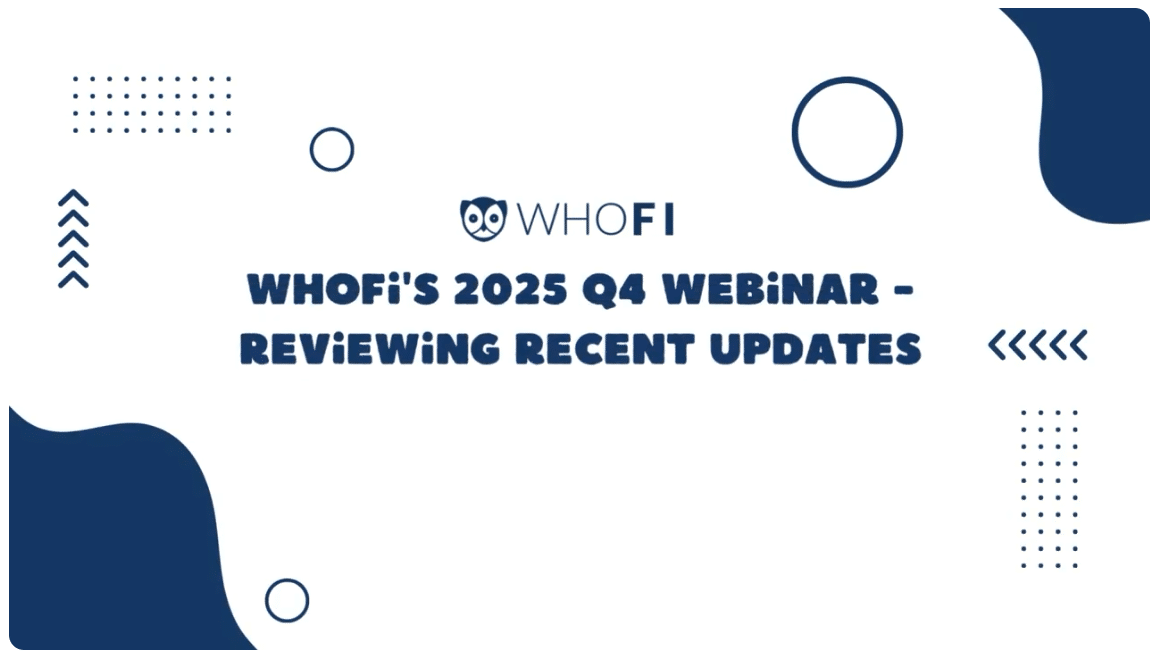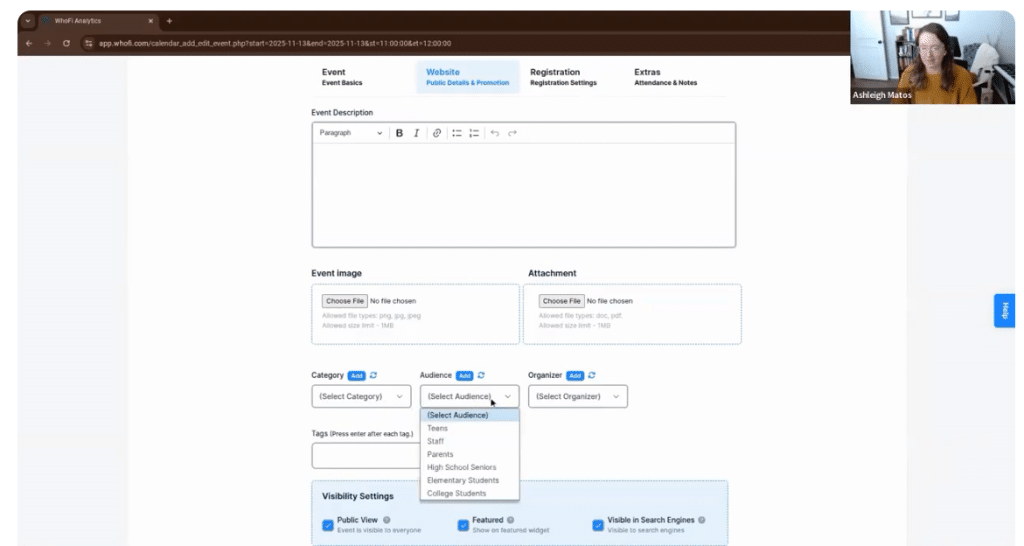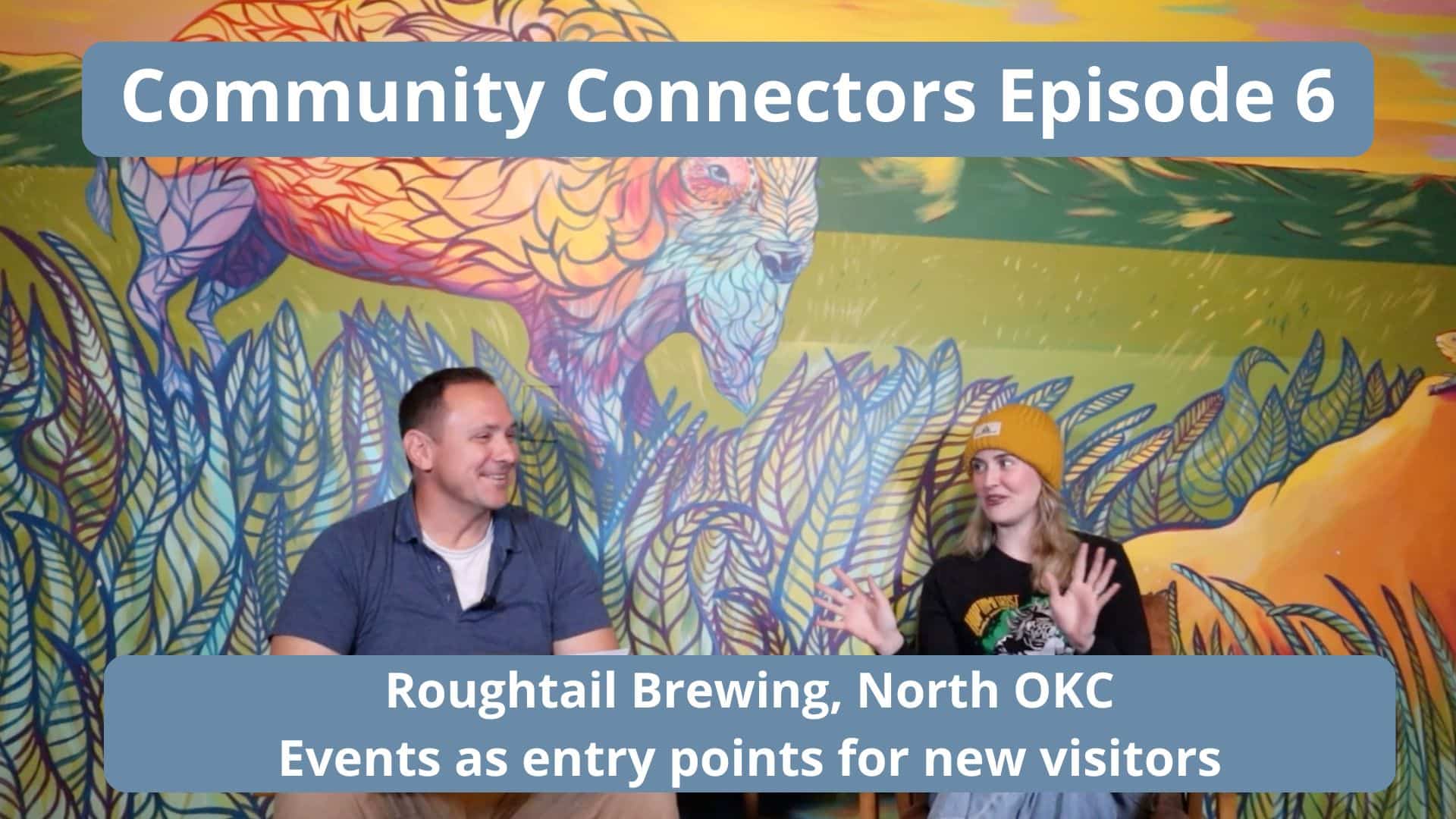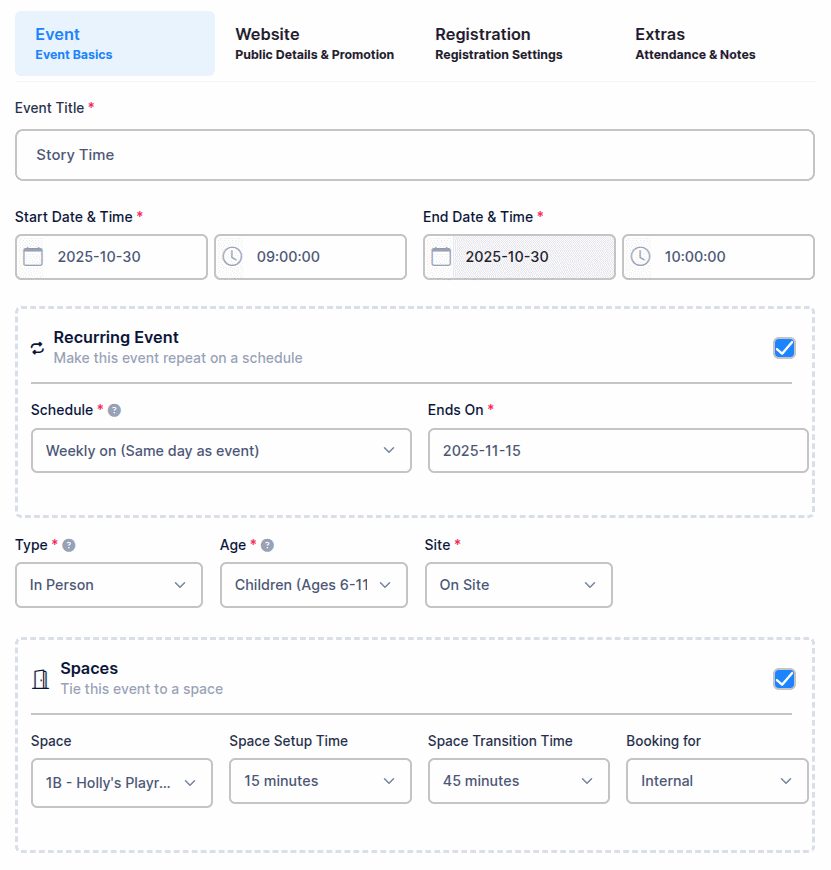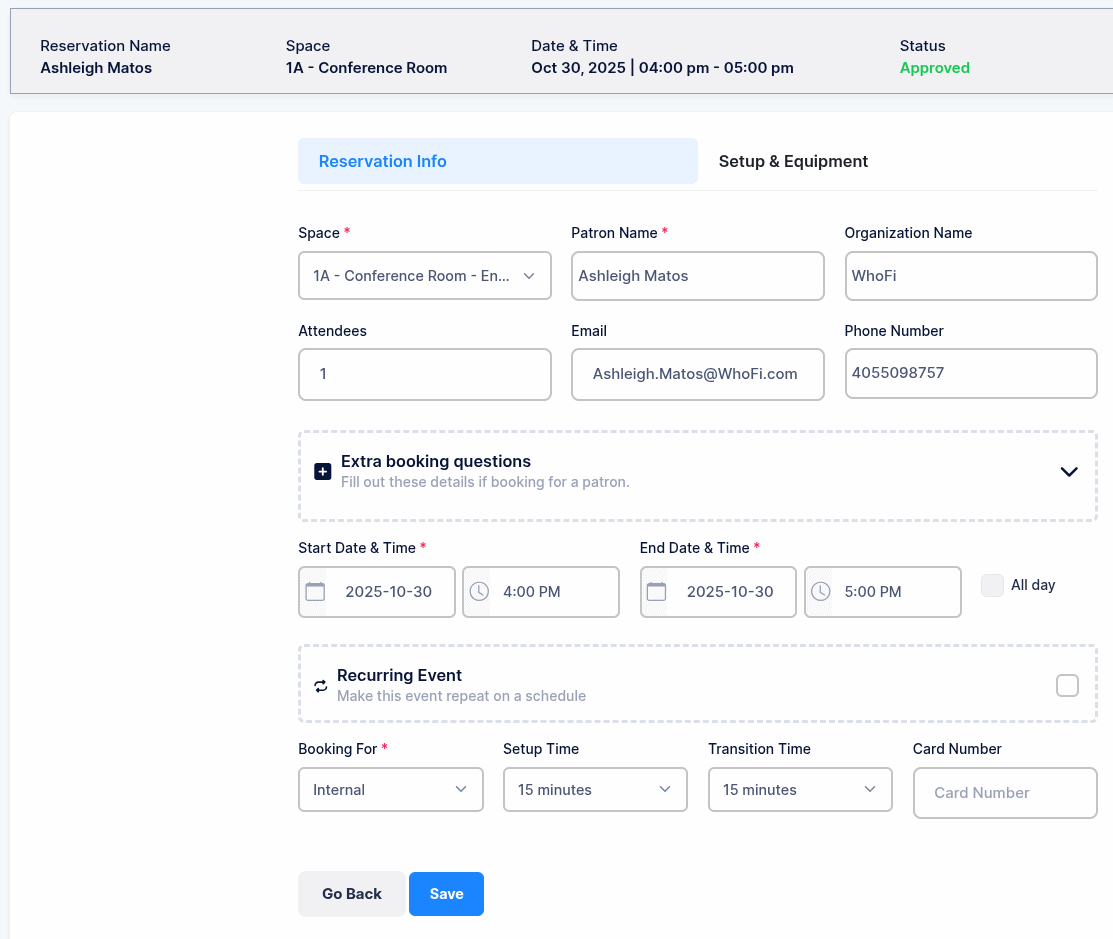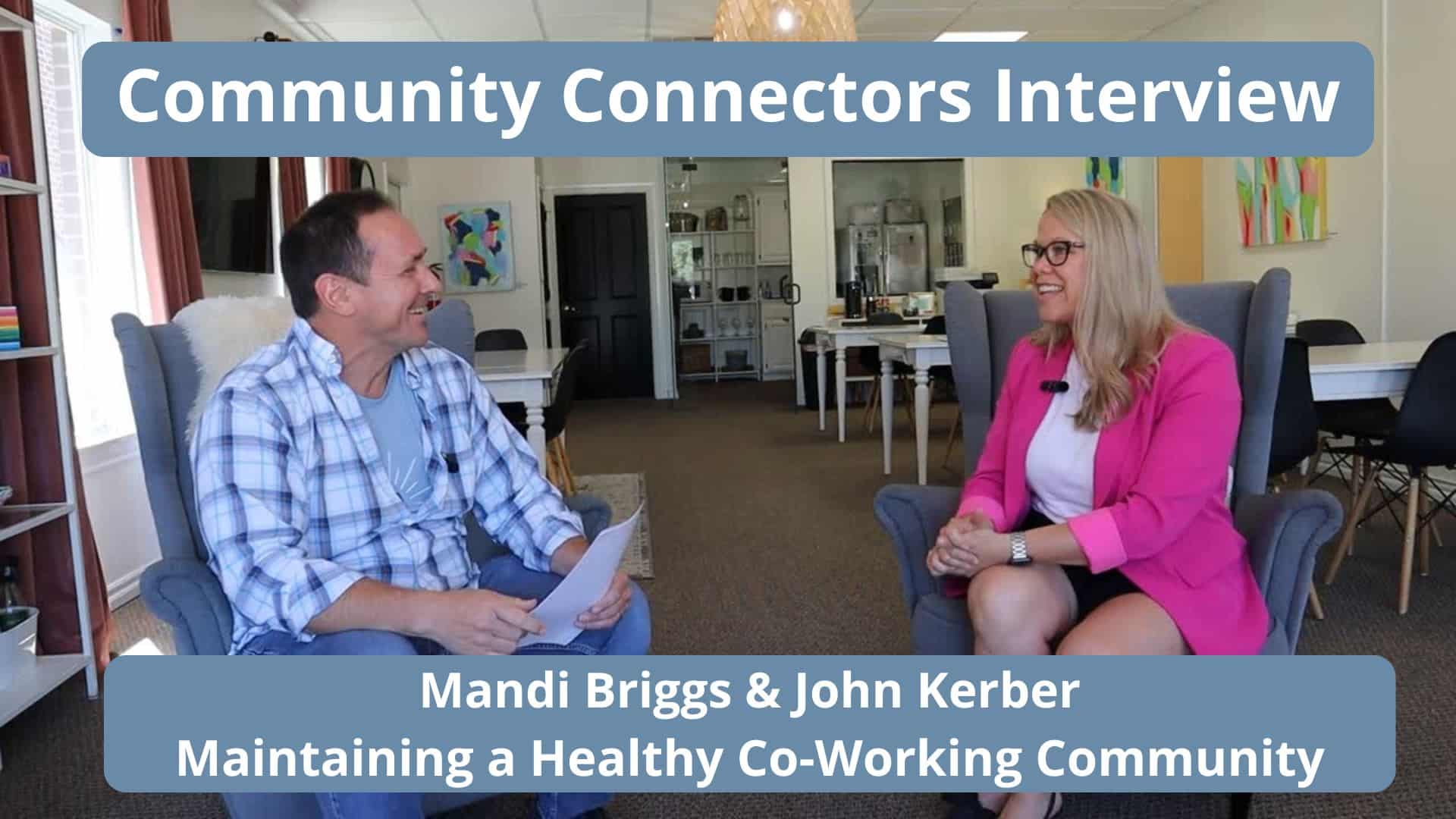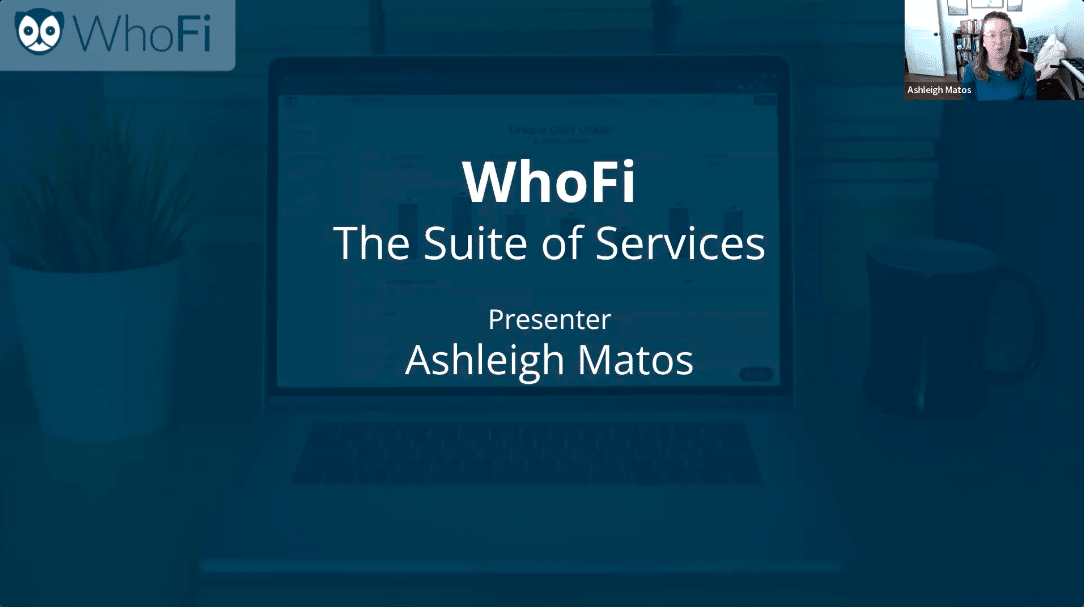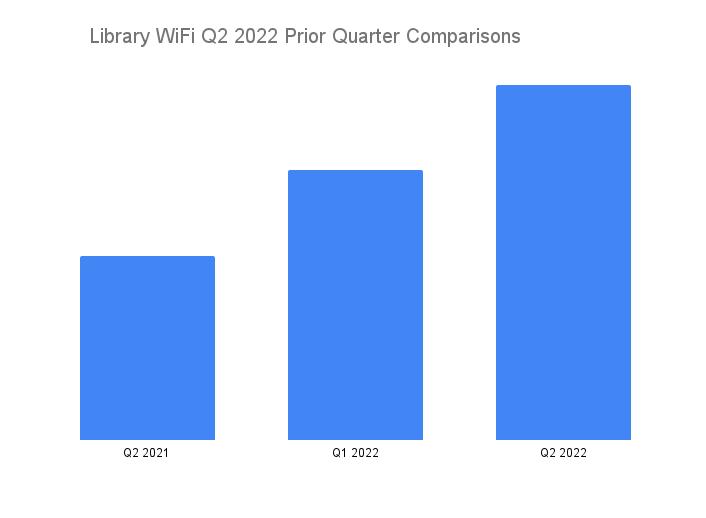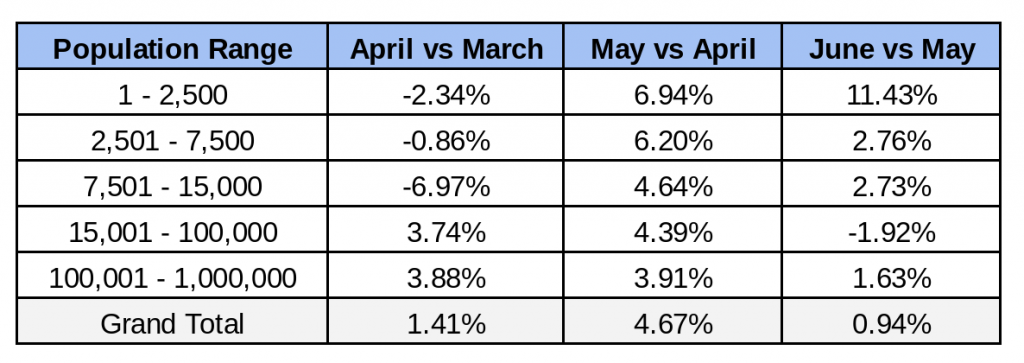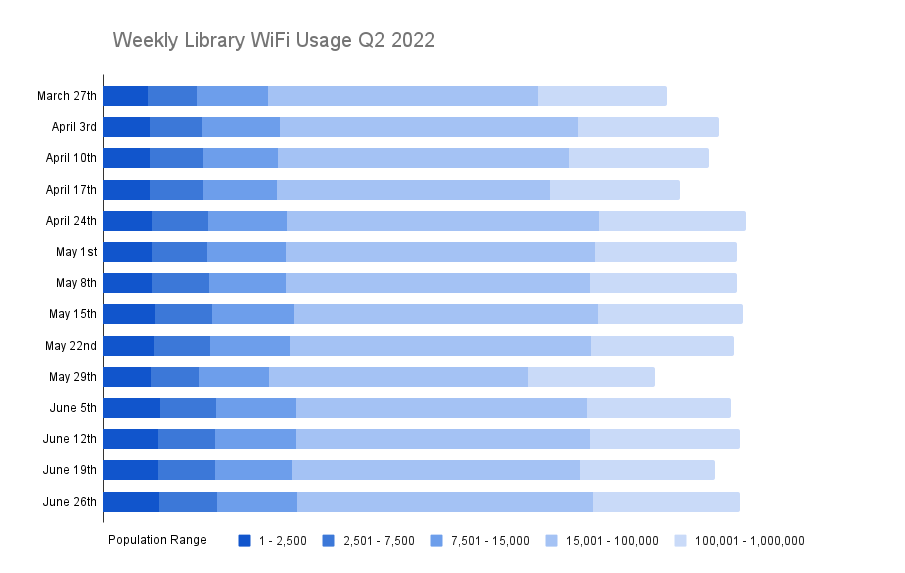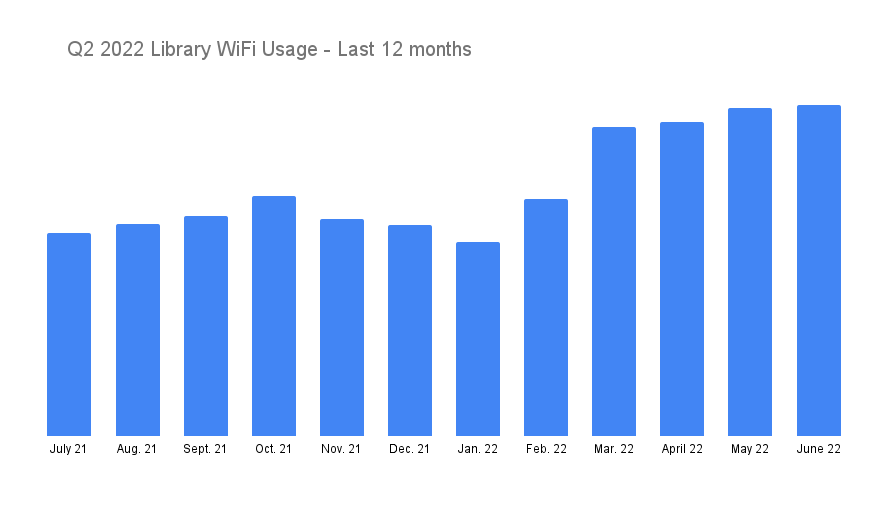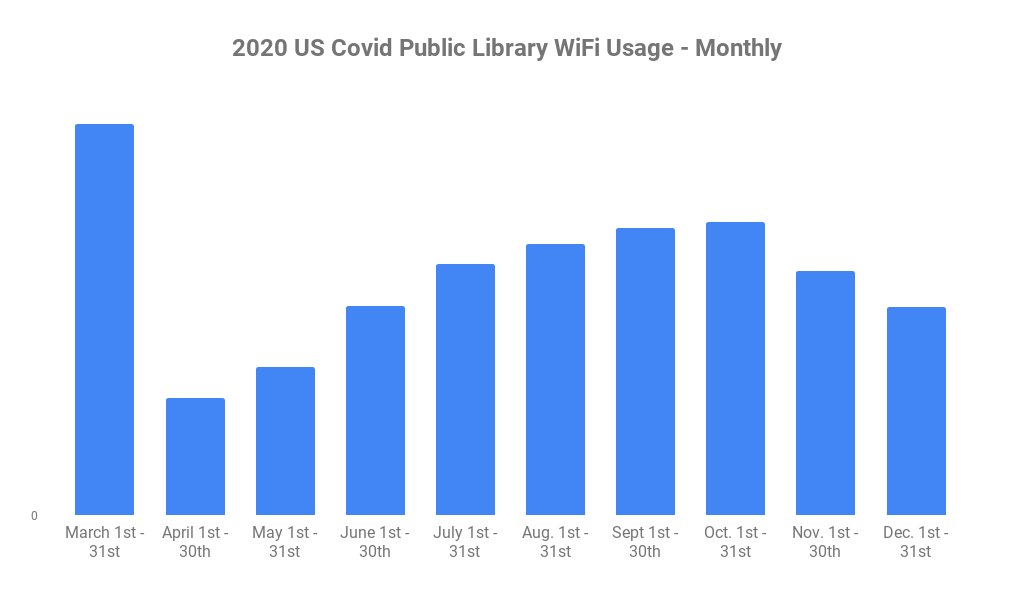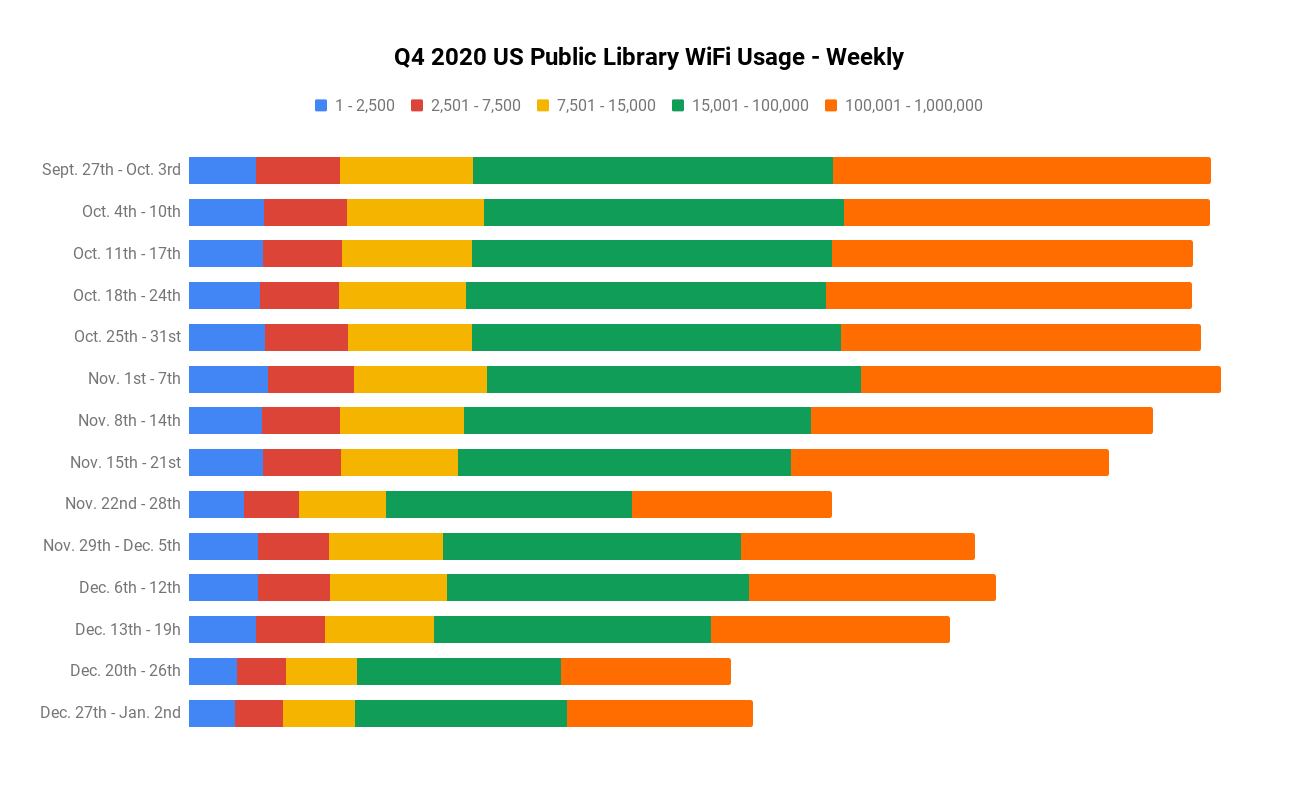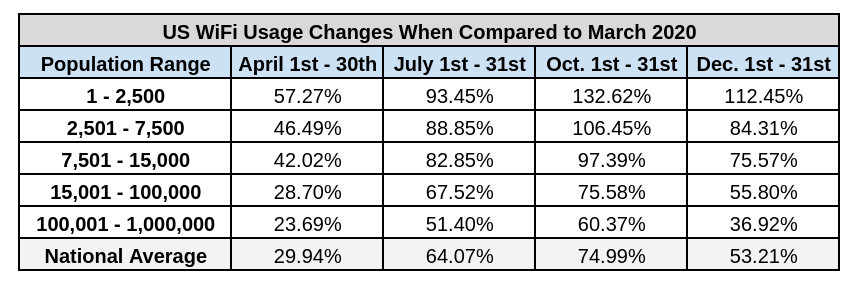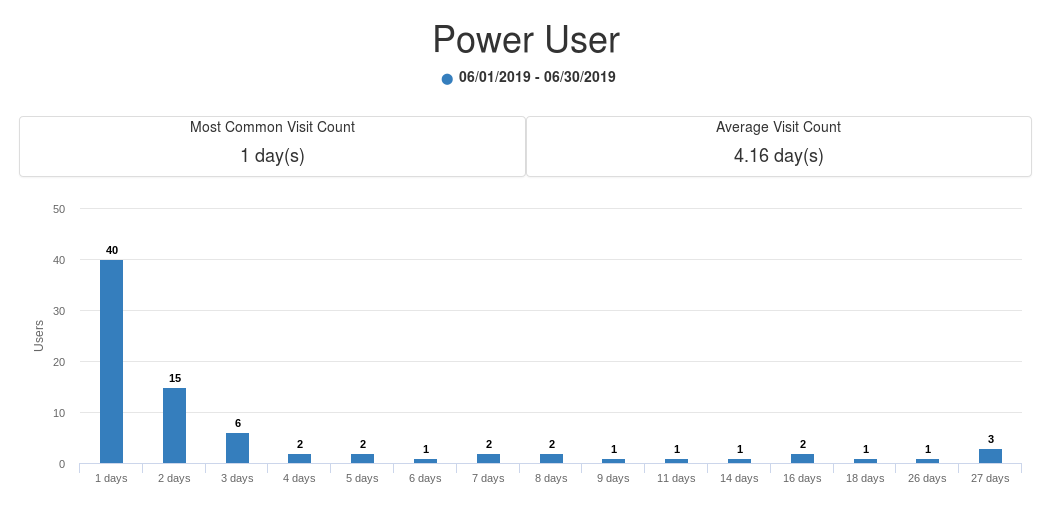Q4 2025 Webinar and Product Updates
Thank you to all the library partners who joined our recent webinar. Here's a quick recap of our Q4 2025 Webinar, which includes an overview of changes and product updates of the WhoFi service. Here is also a link to the full webinar, if you'd like to watch the recording, just click on the image or the link below.
Q4 2025 WhoFi Webinar and Product Updates
A More Streamlined Community Calendar
Libraries asked for a cleaner editing experience, and you’ll now see reorganized fields, easier date and time entry, and simple “Add” buttons for building audiences, organizers, or categories on the fly. A brand-new Draft Mode also gives teams the ability to create, review, and schedule events before anything is visible to the public. You can even preview registration pages privately and publish events exactly when you’re ready.
Other improvements, like clearer multi-day event handling, an all-day option, and a more print-friendly calendar, help staff communicate programs in whatever format works best for your community.
More Flexible Registration Tools
Time slot programs now allow extended hours without disrupting existing registrations, and libraries have more control over what information is collected for each attendee. A new “full capacity” option also prevents time slots from closing too early, giving staff better management of popular programs.
Simpler Integrations and Better Reporting
Libraries can now customize calendar styling with CSS, adjust integration link behavior, and take advantage of a new iCal feed to share events with outside calendars. Question Sets gained easier import tools, clearer year indicators, and new weekly and quarterly reporting options.
Improved Wi-Fi and Space Management
System-level Wi-Fi reports now provide branch-by-branch breakdowns at a glance, while Spaces offers clearer booking menus, new rules for patron reservations, and support for combining divisible rooms.
These updates reflect your ideas and requests. We’re grateful for your partnership and always here to help if you’d like support exploring any of these features.
Simple 2026 Library Marketing Plan
Simple Library Marketing Plan for 2026
Here is a simple Library Marketing Plan for 2026 that you can follow for your library in the coming year to increase the number of patrons visiting your library. If you’re like many libraries, you’re likely already starting to plan for next year. Goals like increasing the number of patrons that visit your library, or increasing the number of patrons who attend programs is likely a top priority in addition to increasing funding and having stronger, measurable community impact. This simple plan is based on our Community Connectors interview series, specifically the episode with Lenah Oltman, Director of the Reinbeck Public Library in Iowa.
Library Programming Marketing Discussion Starting at Minute 10 Link
This plan is really best for those libraries that are just trying to get started with a marketing and patron growth plan. If you have a robust solution already in place, then maybe there will be 1 or 2 takeaways that you hadn’t thought of before.
1. Set 2026 Goals
First, you need to decide what “success” looks like this year. Don’t just guess and do some marketing and then decide that’s where we ended up. Instead, come up with a goal and a plan. For example:
- Increase total visits and circulation over 2025
- Have one program per month per age group (0–5, 6–11, 12–18, adults)
- Add at least 5 active community partners that can help promote or cross promote the library and its programs (schools, businesses, churches, boards)
Write these down so you can measure progress.
2. Map Your Audiences and Programs
In a spreadsheet or equivalent, list the age groups you serve. Also, list for each age group what programs or services you currently offer them. Then in the next column include the promotional activities to reach each of those groups independently. Look at what you currently offer them, and then consider what you want to be offering them and how you’ll outreach to them by year end.
For example:
- For ages 0–5, currently no programming, by end of the year, having 1 Storytime + one hands-on activity (e.g., Baby STEM) per month. Promotion on Facebook, the library calendar, and by handing out flyers at the local daycare.
- For ages 6–11, currently have a recurring Lego club, leave that, and add a recurring STEM activity each quarter. Promotion through Facebook and the local elementary school.
- Etc, etc.
If you’re solo, aim for one program and one promotional channel per group per month to start.
3. Build a Clear Program Calendar
Create a simple, always-up-to-date program calendar that is visible on your website:
- Add every program into your online calendar (like WhoFi’s Community Calendar)
- Show date, time, audience, description, and whether registration is needed
- Use the calendar as your “single source of truth” for staff, patrons, and partners
- Events and Programs in WhoFi’s Community Calendar are also discoverable on Google
Add programs as “Save the Date” even before flyers are finished.
4. Use a Basic Promotion Timeline for Each Program
Every month, follow the same rhythm:
- Next month’s programs: Come up with programs for next month for each group, add to the library’s calendar or website, and prepare any flyers, social media posts, or other promotional material.
- This month’s programs: Print out a flyer or equivalent, post it in the library and around town at a community partners location
- 1 week before the program: First social media post on the library’s social media page + post about the program on the town’s Facebook page.
- Week of: Reminder posts + mention at checkout + mini-flyers in books
- After: Quick recap/thank-you post with next related program
This makes marketing repeatable instead of starting from scratch each time.
5. Match the Message to the Audience
Before you design any flyer or post, ask: “Who is this for?”.
Then:
- Choose colors, images, and language that fit that group. For example, if the program is for teens, consider bright, fun, “this is for you”. If the program is for adults, consider calmer, clear, inviting language.
- Give the program a name that feels appealing to your audience, not intimidating. For example, consider “MythBusters Brunch” instead of “Hospice Education Session”
Your goal is for people to think, “That’s for someone like me.”
6. Lean on Local Partners
Choose at least 5 partners and try to make connections with them if you don’t already know them, and then give each a simple role:
- Schools / admin assistants: email families, send backpack flyers
- Daycares: hand out bookmarks and small program cards
- Churches: include programs or large events in bulletins or emails
- Businesses (coffee shops, restaurants, etc.): host table tents with QR codes
- Community boards / chamber: co-host events, sponsor prizes or performers
Check that every partnership is mutually beneficial: you send them foot traffic; they help you spread the word.
7. Use a Small Set of Reliable Tactics Every Month
To keep things manageable, commit to just a few core tactics and repeat them:
Each month, aim to:
- Keep the online calendar current
- Put flyers on your door and one community board
- Share programs on your own social media and in at least one local Facebook/group page
- Place table tents or postcards in one or two local businesses
- Give schools/daycares at least one handout or digital flyer to share
Consistency is more important than doing everything.
8. Track Results and Tell Your Story
At the end of each month, be sure to jot down:
- Number of programs by age group
- Total program attendance
- Door count
- Total checkouts
Use these numbers as a baseline to see which programs and promotional channels worked best.
This helps not just with improving promotions, but also improves monthly and annual board reporting.
You can use these numbers in:
- Monthly Board reports
- Budget discussions with the city
- Future grant applications
This is how you turn “we feel busier” into “here’s the impact your support made.”
And as always, sometimes the hardest part is just in getting started. Setting a goal of 1 program per month, or 1 program per age group per month with 1 new promotional method is a great way to get started and grow from there.
See our current full strategy in our 2026 Marketing Plan for Community Hubs (including Libraries)
Community Connectors Episode 6 - Roughtail Brewing North OKC
Community Connectors Episode 6: Inside RoughTail Brewing’s People-First Playbook
In this episode, we tour RoughTail Brewing in North Oklahoma City with Cambry Staudt, newly promoted Director of Taproom Operations. Cambry pulls back the curtain on a 30-barrel brewhouse where every distributed beer is brewed on-site, headlined by the beloved flagship, Everything Rhymes with Orange.
But beer is only half the story. Guided by the ethos craft, culture, community, RoughTail has become a true third place. Think weekly trivia, board game nights with the Oklahoma Board Game Association, Magic: The Gathering Tuesdays, family-friendly spaces (yes, a kids’ corner), and a full kitchen with rotating specials.
Cambry’s playbook for thriving community spaces in 2025: prioritize fewer, higher-quality events. Keep bookings simple with transparent minimum spends (not hidden fees), and balance beer-nerd credibility with an unpretentious welcome for everyone.
Rooted in homebrew origins, and rebuilt from the ground up in recent years, RoughTail is aiming to be the Oklahoma brewery travelers seek out, and the neighborhood spot locals return to weekly. Come for the beer. Stay for the community.
📍 Learn more: https://roughtailbeer.com
🎥 Full episode: https://youtu.be/y8QCULSfa20
Updated Look for Calendar and Spaces
We're excited to share with you that, some upcoming changes are being made to the editing menus for Community Calendar and Spaces. Based on user feedback, the user interface is getting some changes made to it, making it even easier to manage your events and utilize the features.
📆 Community Calendar Updates
Here's what's new:
- You can type in the time for the event to save time and skip the scrolling!
- New 'add' buttons make it easier and faster to expand your options within the Category, Audience, Organizer, and Registration form dropdowns.
Here's what's moved:
- Assigning a Space is on the first tab, so you can quickly find it and assign on-site programming.
- Providing an off-site location is available on the first tab, making it faster to set up off-site events.
- The second tab is the Website tab. We've grouped all patron-facing fields (Category, Audience, Tags, Organizer) here for faster, easier review of what your community sees.
- The Registration tab is the third tab, with more organized features and easier-to-understand dropdowns.
- All of the extra internal options, such as attendance and notes, are on the fourth tab.
+ Easier Printing! 🖨️
Notice the new button to save your calendar as a PDF! Download the current month you're viewing and print the PDF when you're ready for distribution.
🚪 Spaces Updates
Here's what's new:
- The basic booking information will always be available as a banner across tabs, so you can confidently make changes knowing you're on the right booking.
- A new all-day booking option makes scheduling all-day bookings simpler.
- Organization has been added as a new field. In the future, we plan to display the booking by the organization name if filled out.
- You can type in your desired time, reducing scrolling.
- A new optional Payment status field has been added to mark if the booking has been paid or not. This is a staff-only field for now.
Here's what's moved:
- The first tab groups all contact and custom field information together for faster intake and review.
- The second tab houses staff interactions, such as the status of the booking and the stage.
- We've merged the third tab into the second tab to make assigning booked equipment easier.
Want to Learn More?
If you’re already a partner, all you need to do is login to start saving time with the new user design. Curious about the WhoFi Suite of Services built for libraries and other community spaces? We’d love to chat! Reach out to us at marketing@whofi.com or click the button below to schedule a meeting.
BOOK A DEMO
Community Over Competition: Episode 5 - Mandi Casey on The Collective Coworking Space
In this episode of Community Connectors, Episode 5, host John Kerber visits Edmond, Oklahoma, to speak with Mandi Casey, owner of The Collective, a women-focused coworking community. What began as a member experience turned into a leadership role when Mandi purchased the space in 2020—just six weeks before the pandemic shut everything down.
From Member to Owner
Mandi first joined The Collective in 2018, drawn by the need for a dedicated space outside of coffee shops. She quickly became a go-to resource for members thanks to her background in marketing and communications. When the original founder stepped away, Mandi stepped up, determined to preserve a space she believed was special.
Thriving Through Challenge
Despite the timing, The Collective didn’t lose a single member during COVID. By moving masterminds and meetups online, Mandi kept women entrepreneurs connected, supported, and accountable. Her coaching skills helped members navigate mental roadblocks and business pivots, proving that community is stronger than circumstance.
Culture of Connection
The Collective operates on a simple ethos: community over competition. Members celebrate each other’s wins—sometimes literally with confetti poppers—and support one another through masterminds, social events, and shared accountability. Protecting that culture, Mandi says, is as important as offering Wi-Fi or desks.
Lessons for 2025
Asked what it takes to run a successful community space today, Mandi points to three things:
- Value over free: Even small paid events drive better attendance and commitment.
- Shared experiences: Whether entrepreneurship, hobbies, or passions, a unifying focus creates belonging.
- Customer journey: Think about the member experience from first email to final goodbye.
Why Watch?
Mandi Casey’s story is a masterclass in resilience, intentional culture, and the power of women supporting women. If you run a coworking space, manage community events, or simply want to understand how connection sustains people through challenge, this episode is full of practical wisdom.
▶️ Watch the full interview on YouTube - https://youtu.be/qtsbA6gdwv4
🌐 Learn more about The Collective - https://thecollectiveok.com
Q3 2025 WhoFi Webinar and Product Updates
This recorded video webinar shows you quickly some of the updates and enhancements to the WhoFi service over the last year that can help you save time, cut errors, and get cleaner insights from the tools you already use in WhoFi.
You’ll see how Question Sets replaces scattered spreadsheets with one organized workspace you and your team can trust. Daily, monthly, and annual trackers auto-save, roll up totals for you, and log who changed what. So, you can spend less time hunting numbers and more time acting on them. Built-in formulas reduce manual math, and tooltips standardize what to count, which helps new staff contribute confidently. If you’re already using Wi-Fi Analytics and Community Calendar, your program and attendance data auto-syncs into the right questions. This gives you a head start on board reports and state surveys. You’ll also learn how to import historical numbers and copy prior years to keep your instructions and workflows intact.
For programming teams, the Community Calendar segment helps you streamline the entire lifecycle. You’ll learn how to plan events, publish them to your website, capture registrations, and record attendance in two clicks. You’ll see practical setups for time-slot, series, and per-attendee registration, plus automated confirmations and 24-hour reminders that reduce no shows. Reporting options include quick, downloadable infographics for board packets and detailed comparisons for directors. Now you can advocate with clear visuals, not spreadsheets.
If you manage rooms or other areas, the Spaces walkthrough shows how to let patrons manage their own room bookings while your staff keeps control. You’ll learn to set auto or manual approvals, apply fair use rules to prevent monopolization, display availability online, and add kiosk mode outside a room. Internally, the bookings list, pending queue, and usage reports make it easy to find reservations fast and show trends to stakeholders.
Finally, you’ll get a preview of what’s next. You’ll hear first takes on draft mode for programs, museum pass reservations, makerspace equipment scheduling, and payments for room bookings. By getting a first look, you can decide which pilots to join and shape the roadmap.
By watching the video, we hope you’ll leave with concrete setups, report templates, and settings you can apply today to reduce your workload and improve your advocacy!
▶️ Watch the full interview on YouTube - https://youtu.be/BlXM6rvDDx8
Public Library Insights Q2 of 2022
The second quarter of the year saw the continued higher usage of WiFi among libraries of all population sizes. There was a steady, sustained increase for each of the months in the second quarter of the year. This resulted in a 31% increase when compared to the prior quarter of Q1 2022. This also resulted in a 93% increase when compared to the same quarter of the prior year, or Q2 of 2021. The same quarter prior year increase is particularly encouraging because it indicates that seasonality alone is not responsible for the jump in usage.
This data continues to show that we may be entering a post-pandemic "new normal" where a new baseline is being established. Library WiFi is now busier than it was during the height of the pandemic and consistently so across all months and population sizes for the quarter. Including March of 2022, we've now seen four consecutive months where the monthly WiFi usage was higher than in any month of 2021.
Steady results among all population sizes
One of the most remarkable things about this quarter was how consistent the public WiFi usage was at the libraries for every single month. We've yet to have a quarter where the growth or declines were this minor across all population sizes across each month.
The chart below shows a very stable WiFi usage number for each month and population group. Most of them showed steady usage neither increasing or decreasing by more than 7%, and only one group saw double digit changes.
Weekly WiFi usage by population size
Looking at the WiFi usage week over week broken down by population shows the same levels of steady use. Other than the Memorial Day holiday week of May 29th, you'll see how consistent the WiFi usage at the libraries was through the quarter. There were no major increases or decreases based on population, and only some variance between weeks of whether smaller or larger libraries were increasing or decreasing. Again, this is showing steady, consistent patron usage of library WiFi in Q2.
What does this mean for these libraries and how can they best serve their community going forward?
The data is clear: WiFi is a valuable resource the libraries offer to help their communities. As libraries begin to prepare for the year ahead and planning for the future, tracking WiFi usage could prove beneficial for library advocacy efforts, operational improvements, strategic planning, and accurate reporting for the PLS survey. Having such information can give libraries the tools they need to secure funding to provide more and better services, and even help guide decisions on how to best use their space.
July 2021 to June 2022 Results
Looking at the data over the last twelve months shows a story about how much higher the increase this quarter appears to be. All three months of Q2 were higher than any month in 2021. While February and March of 2022 had the highest percentage increases, April, May, and June are showing that the prior months were not just single data points, but establishing a new baseline.
Carrying insights into the future
This data solidifies the importance of public libraries within the communities they serve. Throughout the pandemic, public libraries continued to help patrons stay connected to school, work, and family. In addition, they also continue to help provide social service assistance for their community members through filing for unemployment, Census registration, and job searches. In a post-pandemic "new normal" we expect to see continued use of the library WiFi by the communities and the patrons that they serve.
Q4 Effects of COVID-19 on Public Library WiFi Use
WhoFi analyzed data from our library partners to determine the effect of COVID-19 on patron WiFi usage. This report includes our findings during Q4 2020.
We’re now ten months into the COVID pandemic, and public libraries continue to adapt to this new normal by reinventing their services to meet the current needs of their communities. These new innovations are taking place across the country. Libraries are bolstering their online collections and expanding access, enhancing access to public WiFi, making it easier to get a library card, starting and adding to their virtual programming, adding outdoor programming, offering curbside pick-up, and curated book bags, to name a few.
This new reality created an environment for public libraries to rethink and improve how they serve communities. In many cases, libraries have migrated their in-person programming to the digital space. The flexibility of online programming is helping libraries reach additional community members. For some programs, this has resulted in increased attendance since patrons can attend storytime or participate in a seminar at their convenience and without concern for building capacity.
Many library buildings have reopened, but are operating at a limited capacity in accordance with safety guidelines. Services like grab-and-go, limited computer use, and printing/scanning/faxing are available inside the building, while other programming and outreach remain online. Libraries are providing more online resources (e-books, e-magazines, database access), virtual programming (storytime, craft sessions, etc), and WiFi access. In our library partners’ opinions, these services will continue in the future even after COVID. New demands such as video conferencing and e-learning make having high-speed internet vital to meet the changing needs of both the library and the community it serves.
Through the fall and into the beginning of winter, how has COVID affected library WiFi use in Q4?
Our data shows that after the initial drop in WiFi usage in March, trends steadied and then began to rise around April 26th. There continued to be a steady increase in WiFi usage nationwide across cities and towns of all population sizes. Only most recently during the holiday season did we see the upward trend take a slight downturn. This slight decline is most visible during the weeks surrounding the Thanksgiving, Christmas, and New Year holidays. Library efforts to enhance and extend WiFi services, paired with a solid communication plan, seem to have the desired effect of helping their community members stay connected. The total number of visits, however, isn’t as high as it was prior to shut-downs, but shows continued use despite building closures. The graph below shows WiFi usage trends from March through December.
The Holidays and Seasonality still affect WiFi usage.
The chart below provides a week over week look at the WiFi usage throughout the quarter. This view really highlights what took place and the cause for the slight declines in November and December. The decrease in WiFi usage during the holiday weeks of Thanksgiving, Christmas, and New Years can be seen clearly below. Similar decreases can be found in previous years November and December WiFi utilization. This indicates that the decrease is more the result of seasonality.
Patrons in rural service areas often rely on the public library as their main source of internet.
Public libraries are already considered an anchor institution that provides the internet to the community. Throughout the pandemic we've seen a difference in the continued usage of public library WiFi when looking at the usage changes by population. Urban libraries had the largest decrease in usage when the pandemic hit and have had a slower return to normal.
Breakdown of WiFi usage rates by service population
The graph above shows the WiFi usage rates of each population grouping from March to December. The most dramatic change in usage can be found in the 100,000-1,000,000 category, which has only seen about a two thirds return to previous utilization. Another interesting statistic is the 1-2,500 and 2,500-7,500 population groupings, which by October had regained all of their previous WiFi usage rates prior to the beginning of the pandemic.
Libraries are important to communities, especially in times of crisis.
After speaking with our library partners, it’s clear these adapted library services are here to stay, even after COVID. The COVID crisis has opened doors for new ways of connecting communities and enhancing library services. High-speed internet will be necessary to continue to create and distribute online programming and meet community needs for WiFi used for work, school, and personal purposes.
What’s been created out of this crisis can’t replace how libraries operated previously, nor should it. Retaining offerings of a shared community space is valuable, and in-person gatherings is something people want even more now. When adapted services are done in combination with traditional methods, everyone wins.
Even before the coronavirus outbreak, lack of internet access was a big problem. Now, it’s critical. Public libraries are on the front lines of this problem helping patrons stay connected to school, work, and family. They’ve also been important for social services such as filing for unemployment and completing the census which requires a connection to the internet. The data is clear: WiFi is a valuable resource the libraries offer. Tracking this could prove to be beneficial for library advocacy efforts, operational improvements, strategic planning and accurate reporting for the PLS survey.
Contact us for more information or to book a demo.
Analytics of Regular Customers
Jason was a regular at the coffee shop. He had glasses and a white beard. Spending a few hours reading or working on his laptop on weekday afternoons is how we usually saw him. He was always friendly to the staff. He’d been coming so long that he had become a staple, one of the people we just expected to always be there.
Then one day Jason stopped coming.
And that’s when the questions started. Was he OK? Had he moved, or found a different coffee shop? Maybe he started a new job. Did our change in layout cause an issue? He hadn’t said anything. He didn’t seem upset the last time he was here.
It can be hard to keep track of all of your patrons changing needs. That's why analytics are so helpful. Analytics create a picture of how people are using your venue and how it's changing. Sometimes small changes can have more significant effects than initially anticipated. Analytics can help get a handle on what's happening.
For example, the Power User report helps determine what’s happening with your regular customers. This report shows how frequently users are visiting your space over time. What most venues see is a large number of visitors from one to five days per month. But then they also start to see a second bump, usually around seven to twelve days. These are your power users, your regulars. But what happens when you run some comparisons over other months and notice that your power users, your regulars, have gone down.
Factors that cause changes in regular visitation
Let's look at some factors we’ve seen cause a change in regular visitation.
Change in Open Hours
If a venue changes its open hours, then visitation can be affected. Doing this arbitrarily without some supporting data can cause issues.
Change in Facilities
Regular visitors will usually have specific habits, and that means particular preferences. Even a slight change in layout or amenities could upset a visitor who’s been accustomed to the same experience for months or even years. There’s not an easy solution for this, as your venue’s needs will change with time as you grow. Be communicative with your patrons about future updates and build relationships that are open and honest.
Change in Staffing
Just like facilities, the people in your venue make the biggest impact on every person who walks in the door. The loss of a local favorite can be disheartening for the patrons that look forward to their help, but don’t take it too hard. It’s a constant challenge to be providing the best possible service to every patron, and hold that standard for every member of your staff.
Seasonality
Seasonality often affects how patrons utilize a space. Some coffee shops are more pleasant when it's raining outside. Other venues are known for their outdoor patios during spring and summer months. Although seasonality can affect traffic numbers in general, for regulars, there are a few more variables to consider. The time of year will determine work schedules and free time, which can affect regulars. The summer might bring in college students or travelers. Individual work projects bringing in customers might only be during certain seasons. To take seasonality into account, it's best to compare your visitation changes to both the prior month and the same month in the prior year. Looking at both comparisons gives a more precise insight into what effect your changes are having on your patron counts.
Blocking Adult Content on Public WiFi
As the manager of a venue that offers Free WiFi, you want to make sure that it is fast, reliable, and secure. You also want to make sure that your patrons have a comfortable experience. You want them to choose to come back again and again.
One of your visitors accidentally or intentionally looking at adult content while using your Public WiFi is a tricky situation. This behavior can make your other guests uncomfortable. This sometimes leads to your internet service provider (ISP) threatening to cancel your service. You also don't want minors accidentally viewing this material at your space.
So what can you do about it?
The Debate
There are usually two approaches when it comes to handling adult content on Public WiFi systems. Both options have been listed here so you can choose which approach seems more appropriate for you.
Personal Responsibility
The first approach is to say that the internet should be free and never filtered. This group believes that all WiFi guests take responsibility. They believe that if a patron or guest is using the WiFi inappropriately, then this person should be banned either permanently or for a period of time from the venue. All other guests should have fast, unrestricted open access to the internet except for perhaps filtering known virus or malware sites. Often venues with this approach offer educational classes on how to safely use the internet. They may also require clicking through the terms of service when first joining the WiFi.
Content Filtering
The second approach is to filter certain content or websites and make this content unavailable on the Free WiFi. This group believes that it is the venues responsibility to create a positive browsing environment for all guests. This approach usually involves configuring the guest WiFi equipment to make best effort attempts to block inappropriate content. Some venues also choose to do a mix of both content filtering, education, and terms of service click through options as well.
Technical Solutions
There are several technical solutions that may help you and your venue no matter which camp you fall into. Here are two technical solutions that can help you provide your patrons with a positive WiFi experience.
DNS Filtering
DNS is short for Domain Name System. This is what translates a public IP Address like 199.59.149.165 into the more well know twitter.com. DNS Filtering is when you allow a service to only translate good or safe websites to your browser, while ignoring or blocking any websites seen as bad. Setting up DNS Filtering is fairly simple and usually takes less than 10 minutes.
There are several options for public WiFi depending on which approach you consider more appropriate.
Google DNS - No Content Filtering, but Fast
Google DNS is probably the most well known DNS Setting in the world. By setting your DNS Settings to 8.8.8.8, you are guaranteed to have fast, reliable DNS that is unfiltered. You can learn more about Google DNS here https://en.wikipedia.org/wiki/Google_Public_DNS
Quad9 - No Content Filtering, but Malware Filtering
Quad9 is a DNS option that is fast and secure. By setting your DNS Settings to 9.9.9.9, you will have fast, secure, reliable DNS that also blocks most of the known malware and phishing websites. You can learn more about Quad9 at their website https://www.quad9.net/
OpenDNS - Filters Adult Content, but mainly for enterprise lately
OpenDNS is the original content filtering DNS system. It has basic content filtering by default and several options for public venues. This system will block adult content for you and it can also let you choose if certain social media, gambling, and other categories are filtered at your location. OpenDNS was acquired by Cisco in 2015. Since then, Cisco has been promoting it's Umbrella platform for enterprises while keeping OpenDNS for home systems. Your public venue may still fall under OpenDNS licensing, but may need to upgrade to Umbrella. For more information visit https://www.opendns.com/
CleanBrowsing - Filters Adult Content, newcomer
CleanBrowsing is a relative newcomer to this space. The company launched in 2017, but it seems to tick several boxes appropriate to public venues as well as homes with children. CleanBrowsing will block adult content by default. It has both free and paid options for public venues. They're pricing also seems reasonable. As they are new, there is less known about them. You can learn more by visiting https://cleanbrowsing.org/
Hardware Based Content Filters
Several Routers also include content filtering by default or as an option. Many well known brands such as Sonicwall, Checkpoint, Sophos and Barracuda offer integrated content filtering solutions. There are several nice things about an integrated firewall based content filter. The content filtering happens locally. The content filtering can often be more robust than DNS filtering alone. For example, an inappropriate image on a Google Doc would not be filtered by a DNS filter because it is google.com, but an on premise hardware solution would still filter this.
However, if you haven't already purchased one of these firewalls for your venue, this would mean replacing your existing network equipment. You might find it best to start off with a DNS based solution, and then as you determine your needs, upgrade to an on-premise filtering solution during your next router upgrade if appropriate.
Conclusion
You work hard to give your visitors the best possible experience in your venue. Handling guests watching adult content on your WiFi is a challenge. There are several options, both technical and managerial that you can use to enable a positive experience for all. Education, Terms of Service, DNS Filtering, and Hardware based Content Filters are good choices to consider for your Free WiFi.

